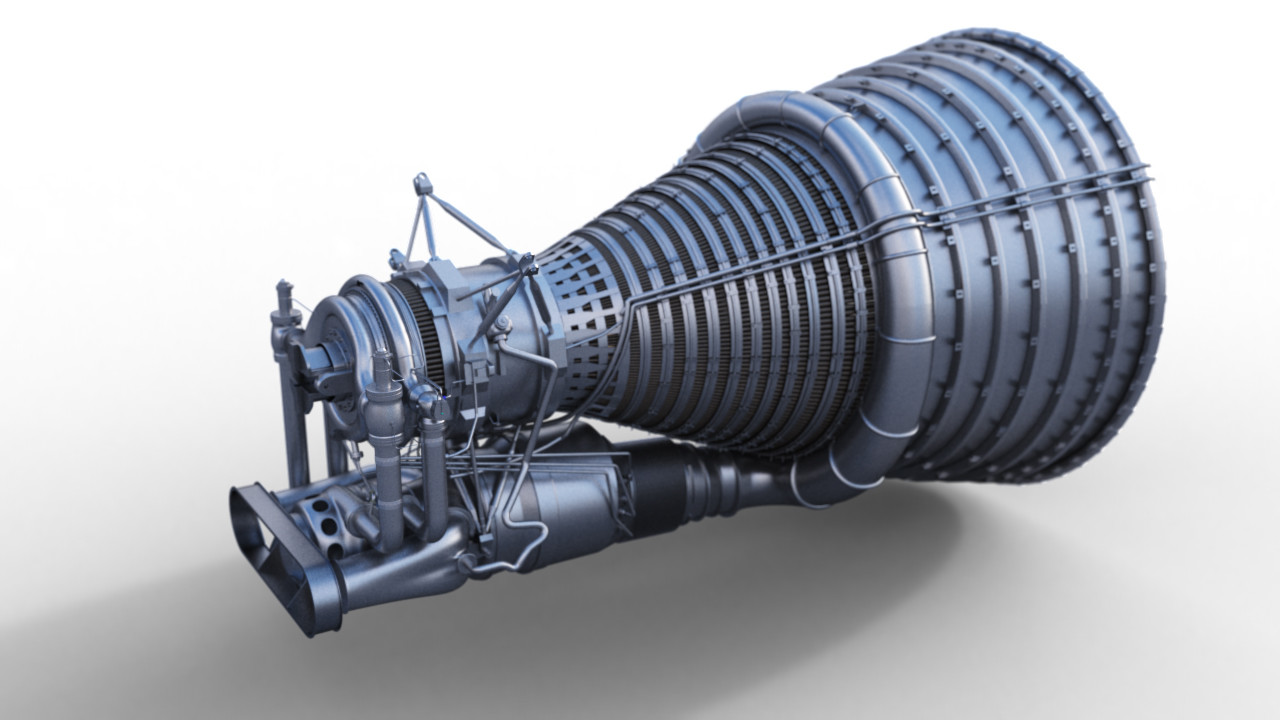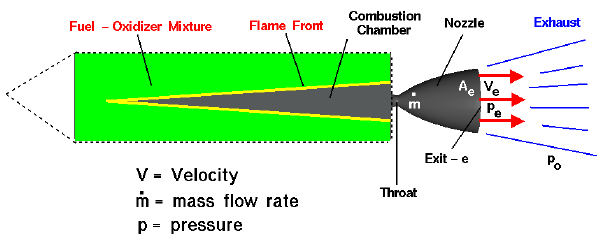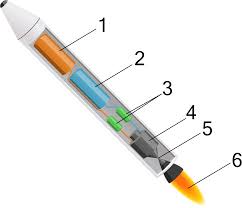How do rocket engines work?
Since I'm currently preparing a report for School about Mars Exploration, I thought it would be cool to share with you some of the knowledge that I acquired while collecting information for this report. One particularly interesting part is: How do rockets even work? In this post, I aim to answer that question.
What is a rocket engine?
In it's simplest form, a rocket engine is a device that burns some sort of rocket fuel and expells the exhaust gasses out of the back. To make sure these engines have maximum efficiency and thrust, they share a few traits that have proven to be very useful in rocket engine design:
The de Laval nozzle
Maybe you have observed that most rockets have engine bells shaped like this:
 Image credits: https://www.artstation.com/artwork/qkJ4e
Image credits: https://www.artstation.com/artwork/qkJ4e
This distinct shape is called a "de Laval nozzle". The purpose of this design is to accelerate the gasses to their maximum speed, causing maximum thrust:
The gasses in the combustion chamber are energetic but subsonic. As they pass through the converging part of the nozzle, the gasses accelerate to higher and higher speeds. Once they arrive at the "throat" of the nozzle, where the cross-sectional area is at its minimum, the gas locally accelerates to sonic speed (Mach number = ~1.0), a condition referred to as choked flow. In the expanding part of the nozzle, the gas can now accelerate to supersonic speeds (Mach number > 1.0).
Rocket Fuel Types
Rocket fuels are divided into two groups: Solid Rocket Fuels and Liquid Rocket Fuels. Both have their respective advantages and disadvantages. Let's have a look at those:
Solid rocket propellants have the most potential energy. That means, that their maximum possible thrust is much higher than that of liquid propellants. Their primary disadvantage is controllability: Once a solid-propellant rocket has been ignited, there is no way to shut it back of until there is no more fuel. Also, the amount of thrust created by a solid-propellant rocket motor cannot be controlled.
Liquid propellants have the advantage of being easy to control in many different ways. A liquid rocket engine can be throttled, or even shut off, and many can even re-ignite in space. However, they have a much lower thrust.
With this information, we can say that solid propellants are better for heavy lifting (like the space shuttle boosters), and liquid propellants are better at fine-grained maneuvers and anything else that requires precise control of the thrust of a rocket engine.
Now that we have established the advantages and disadvantages of the two different fuel types, let's go more in-depth about how these two types of rockets work.
Solid-propellant rockets

Image credit: NASA
A solid-propellant rocket is by far the simplest type of rocket. The rocket is filled with a mixture of some solid fuel like black powder (used in model rockets) and an oxidizer like potassium nitrate (used in model rockets). Often there is a cone-shaped hole in the bottom of the solid fuel grain (The whole cylinder of solid fuel is called a "grain", even if it weighs many tons). An igniter is inserted into the hole.
When the igniter is fired, the fuel grain begins to combust and the exhaust gasses are ejected out of the back of the motor, where a de Laval Nozzle accelerates them to supersonic speeds.
Liquid-propellant rockets

Image credit: Wikipedia
Liquid-propellant rockets are significantly more complicated. Every liquid-propellant rocket contains two tanks: One containing an oxidizer like liquid oxygen (blue in the image) and one containing a fuel like RP-1 or liquid hydrogen (orange in the image). The contents of these tanks are pumped into the combustion chamber at high pressures by pumps (green in the image), where they are mixed and ignited by the other gasses in the chamber (or an igniter during the first ignition). As described in another section of this post, the exhaust gasses are accelerated to supersonic speeds to produce thrust
By varying the pump force, the amount of thrust produced by the engine can be controlled. By closing the valves in front of the pumps, the engine can be shut off. To re-ignite the engine, most rockets carry a small tank of hypergolic fuels.
Hypergolic fuels
A hypergolic fuel is a fuel that reacts violently with some other chemical, meaning that it catches on fire when it touches that chemical. For example, monomethylhydrazine (MMH, formula CH3(NH)NH2) catches on fire when it comes into contact with nitrogen tetroxide (NTO, formula N2O4), making the two hypergolic. This behavior eliminates the need for an igniter, but is also very dangerous because the rocket might explode if the tanks are damaged.
Therefore, hypergolic fuels are mostly only carried in small amounts to re-ignite rocket engines in space.